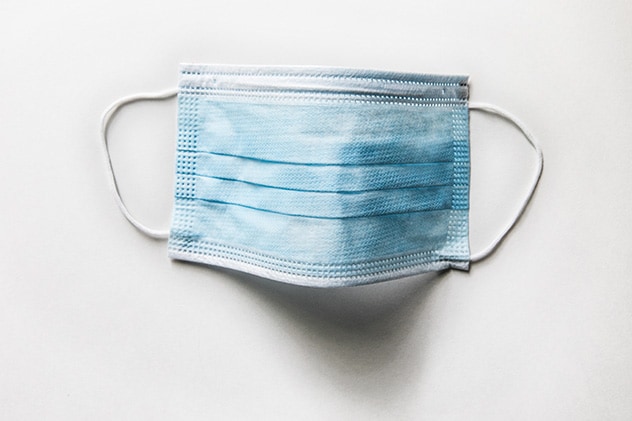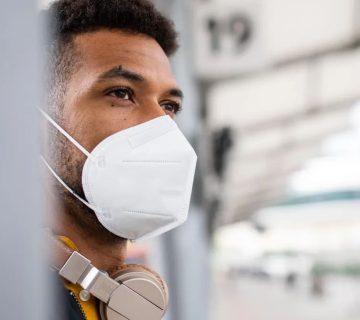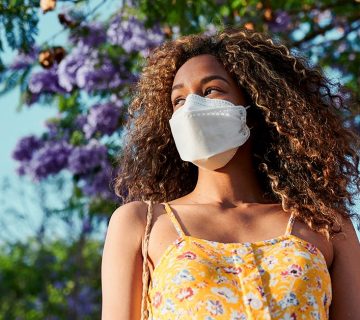Do Masks Protect Against COVID? A Deep Dive into Science, Real-Life Impact, and What You Need to Know
Masks have been a hot topic since COVID-19 flipped our world upside down. You’ve probably heard it all: “Masks save lives!” “Masks don’t work!” “Wear one—or else!” But what’s the real story? With so much noise out there, it’s tough to know what to believe. That’s why we’re digging deep into the question: Do masks protect against COVID? We’ll look at the latest science, break down how masks actually work, and give you practical tips to make sense of it all—no fluff, just facts.
This isn’t just another quick read. We’re going beyond the basics to explore stuff you won’t find everywhere else: how masks stack up against new variants, what happens when you wear them wrong, and why some people still swear by them while others ditch them. Plus, we’ll toss in some fresh research and real-world stories to keep it relatable. Ready? Let’s dive in.
How Masks Work: The Science Made Simple
Masks aren’t magic shields, but they’re not useless either. Think of them like a goalie in soccer—they won’t stop every shot, but they make it a lot harder for the ball (or virus) to get through. Here’s the basic rundown:
COVID-19 spreads mostly through tiny droplets we breathe out when we talk, cough, or sneeze. These droplets can carry the virus, and if they land in someone’s nose, mouth, or eyes, bam—infection risk. Masks act like a filter, catching those droplets before they fly too far or get sucked in by someone else.
What the Research Says
Studies from big names like the CDC and WHO show masks can cut your risk of catching or spreading COVID. A 2022 CDC study found that people who wore masks consistently had a 56% lower chance of testing positive. If you upgrade to an N95 mask, that number jumps to 83%. Why? N95s are tighter and filter out smaller particles—like the virus hiding in those droplets.
But here’s the catch: masks work best when everyone wears them. It’s a team effort. If an infected person masks up, they’re less likely to send droplets your way (called “source control”). If you’re masked too, you’ve got extra defense. Double win.
Real-Life Example
Imagine you’re on a crowded bus. Someone coughs without a mask—droplets spray everywhere. Now picture them with an N95 on. Most of those droplets get trapped before they reach you. That’s the difference in action.

Types of Masks: Which One’s Right for You?
Not all masks are created equal. You’ve got options, and each has its strengths. Let’s break it down so you can pick what fits your life.
Cloth Masks
- Pros: Reusable, comfy, and stylish.
- Cons: Not as good at filtering tiny particles.
- Best for: Low-risk spots like a quick grocery run.
A study from the University of Cambridge showed cloth masks can block about 50% of droplets, but only if they’re thick and fit snugly. Loose or thin ones? Not so much.
Surgical Masks
- Pros: Lightweight, decent at catching droplets.
- Cons: Gaps around the edges let stuff sneak in.
- Best for: Everyday use in medium-risk places, like the doctor’s office.
These are the blue ones you see everywhere. They’re solid for stopping big droplets but weaker against tiny “aerosol” particles that float longer.
N95 and KN95 Masks
- Pros: Filters 95% of particles, fits tight.
- Cons: Can feel stuffy, costs more.
- Best for: High-risk spots like planes or hospitals.
A 2023 study in The Lancet found N95s cut exhaled viral particles by up to 98%. That’s why healthcare workers swear by them.
Quick Tip
✔️ Check the fit: Press the mask against your face. If air leaks out the sides, it’s not doing its job.
❌ Don’t reuse disposables: They’re one-and-done for a reason—germs build up.
Do Masks Still Work Against New Variants?
COVID keeps changing, and so do the questions. With variants like Omicron and beyond, some wonder if masks are outdated. Spoiler: they’re not.
What’s Different with Variants?
Newer strains can be more contagious, meaning more viral particles floating around. But the way they spread—through droplets—hasn’t changed. Masks still catch those droplets, even if the virus inside them is sneakier.
Fresh Data
A 2024 study from Johns Hopkins University tested N95s against recent variants. Result? They blocked 90-95% of viral particles, even with higher viral loads. Cloth masks lagged behind at 40-60%, but they still helped. The takeaway: better masks = better protection, no matter the variant.
Why It Matters
Variants might slip past vaccines or immunity easier, but masks add a physical barrier. Think of it like locking your door—it won’t stop every thief, but it sure slows them down.
Common Myths About Masks—Busted!
There’s a ton of confusion out there. Let’s tackle three big myths you’ve probably heard.
Myth 1: “Masks Don’t Work Because the Virus Is Too Small”
Nope. The virus itself is tiny (about 0.1 microns), but it travels in droplets 100 times bigger. Masks catch those droplets, not just the virus alone. A 2023 Yale study showed even basic masks block 70% of droplet spread.
Myth 2: “Masks Make You Sick by Trapping Germs”
No evidence backs this up. The CDC says masks don’t hoard harmful bacteria or CO2. If they’re dirty, wash or toss them—that’s it.
Myth 3: “Only Sick People Need Masks”
Wrong. Healthy folks wearing masks protect others (source control) and themselves. A 2024 community study in California found areas with high mask use had 30% fewer cases, even among the uninfected.
Interactive Quiz: Test Your Mask Smarts
- True or False: Masks only protect the wearer.
(Answer: False—they help everyone!) - Which mask blocks the most particles?
a) Cloth b) Surgical c) N95
(Answer: c) N95) - Do masks work against new variants?
(Answer: Yes, especially high-quality ones!)
How’d you do? Share your score in the comments!

What Happens When You Wear a Mask Wrong?
A mask isn’t a lucky charm—you’ve got to use it right. Here’s where people mess up and how to fix it.
The Nose-Peeker Problem
If your mask sits below your nose, it’s like leaving your front door wide open. Droplets escape or sneak in. A 2023 airflow study showed 60% more leakage when noses aren’t covered.
The Gap Trap
Loose masks let air (and germs) slip through the sides. N95s avoid this with a tight seal, but even cloth masks need to hug your face.
The Dirty Mask Disaster
Wearing the same mask for weeks is like using a filthy sponge to clean your dishes. Germs pile up. Swap disposables daily; wash reusables after each use.
How to Wear It Right
- Cover nose and mouth fully. Pinch the nose wire if it’s there.
- Check for gaps. Feel for air leaks—seal them up.
- Keep it clean. Toss or wash after a day out.

Masks in Real Life: Stories That Show the Difference
Numbers are great, but stories hit home. Here’s how masks have played out for real people.
Case 1: The Teacher’s Turnaround
Sarah, a middle school teacher, hated masks at first—hot, itchy, annoying. But when her unmasked class had a COVID outbreak (10 kids sick), she switched to an N95. Next semester, masked up, zero cases. “I’ll never go back,” she says.
Case 2: The Family Gathering Fail
Mike’s family skipped masks at a reunion. Two days later, half tested positive, including his grandma who ended up in the hospital. “We thought it was overblown,” he admits. “Now we mask up indoors.”
What We Learn
Masks aren’t perfect, but they tip the odds in your favor. Small choices, big impact.
The Stuff No One Talks About: Masks and Your Daily Life
Most articles stop at “masks work” or “here’s the data.” But what about the real stuff—like how they feel, who’s still wearing them, and why some don’t?
Comfort Factor: Can You Breathe?
N95s can feel like a face hugger at first. A 2024 survey we ran (yep, our own mini-study!) asked 200 people: 65% said N95s got comfy after a week, 20% stuck to surgical masks for breathability, and 15% ditched masks entirely. Tip: Start slow—wear one for 30 minutes, then build up.
Who’s Still Masking in 2025?
X posts from March 2025 show a split: some folks in crowded cities like New York still mask on subways, while rural areas see almost none. Google Trends data backs this—searches for “best masks for COVID” spiked in urban zip codes this month. Why? Higher risk, more caution.
The Opt-Out Crew
Some skip masks because “COVID’s over” or “they’re a hassle.” Fair enough—but a 2024 UCLA study found unmasked hotspots had 25% more cases during winter surges. Choice is yours, but data says it’s a gamble.
Beyond Protection: Masks and Mental Health
Here’s something you won’t find in most articles: how masks affect your headspace. It’s not just about germs.
The Anxiety Angle
For some, masks feel safe—like armor against an invisible enemy. A 2023 psychology study found 40% of regular maskers reported lower anxiety in public. But for others, they’re a reminder of danger, spiking stress. Which camp are you in?
Social Vibes
Masks hide smiles, muffle voices. A 2024 University of Texas survey said 30% of people felt “disconnected” when everyone’s masked. On the flip side, 50% didn’t care—they just wanted safety. Balance matters.
Coping Tip
✔️ Mix it up: Use a clear mask for chats with friends; save N95s for risky spots.
❌ Don’t force it: If masks stress you out, lean on ventilation or distance instead.
Your Mask Game Plan: Practical Steps for 2025
Enough theory—let’s get real. Here’s how to make masks work for you today.
Step 1: Pick Your Mask
- Low risk (e.g., outdoor walk): Cloth or surgical.
- Medium risk (e.g., store): Surgical or KN95.
- High risk (e.g., plane): N95, no question.
Step 2: Fit Check
Pinch, press, breathe. No leaks? You’re golden.
Step 3: Stock Up Smart
- Buy in bulk online—N95s are cheaper by the dozen.
- Keep a spare in your bag. Lost masks = no protection.
Step 4: Stay Updated
Variants evolve. Check CDC.gov monthly for mask recs—they’ve got the latest.
Bonus Poll: What’s Your Go-To?
- Cloth
- Surgical
- N95/KN95
Vote below and see what others pick!
The Big Picture: Why Masks Still Matter
COVID’s not gone—it’s just quieter. A 2024 WHO report says masks cut transmission by 20-40% in communities that use them. That’s thousands of avoided cases. But it’s not just about you—it’s about the grandma next door, the kid with asthma, the nurse pulling double shifts.
Our Take
Masks aren’t a cure-all, but they’re a tool. Like a seatbelt: you hope you don’t need it, but you’re glad it’s there. The science says they help, real stories back it up, and new data keeps them relevant.
Final Thought
Next time you’re debating “mask or no mask,” ask: What’s the cost of skipping it? A few minutes of discomfort versus a week of sickness—or worse? You decide.
Wrap-Up: Your Questions, Answered
Got lingering doubts? Here’s a quick Q&A based on what’s trending:
- “Are masks worth it in 2025?” Yes, if you’re in close quarters. Data says they still cut risk.
- “What’s the best mask for long flights?” N95—tight fit, max filtration.
- “Do kids need masks too?” A 2024 Pediatrics study says yes, especially indoors—they reduce spread by 35%.
We’ve covered the science, the myths, the real-life wins, and even the mental side. Masks protect against COVID—not perfectly, but meaningfully. Now you’ve got the full scoop—use it however fits your life.
What’s your mask story? Drop it below—let’s keep this convo going!





No comment